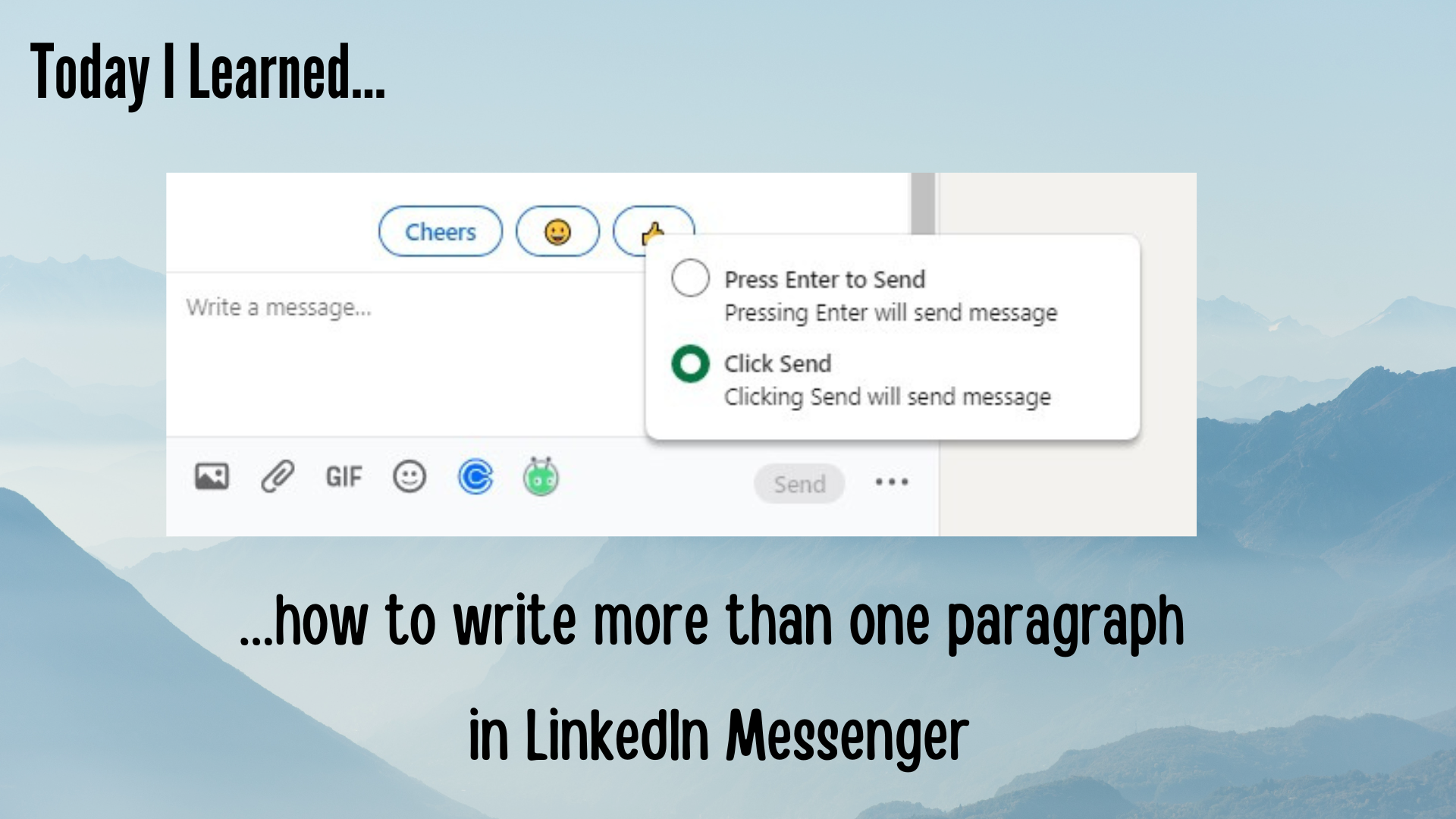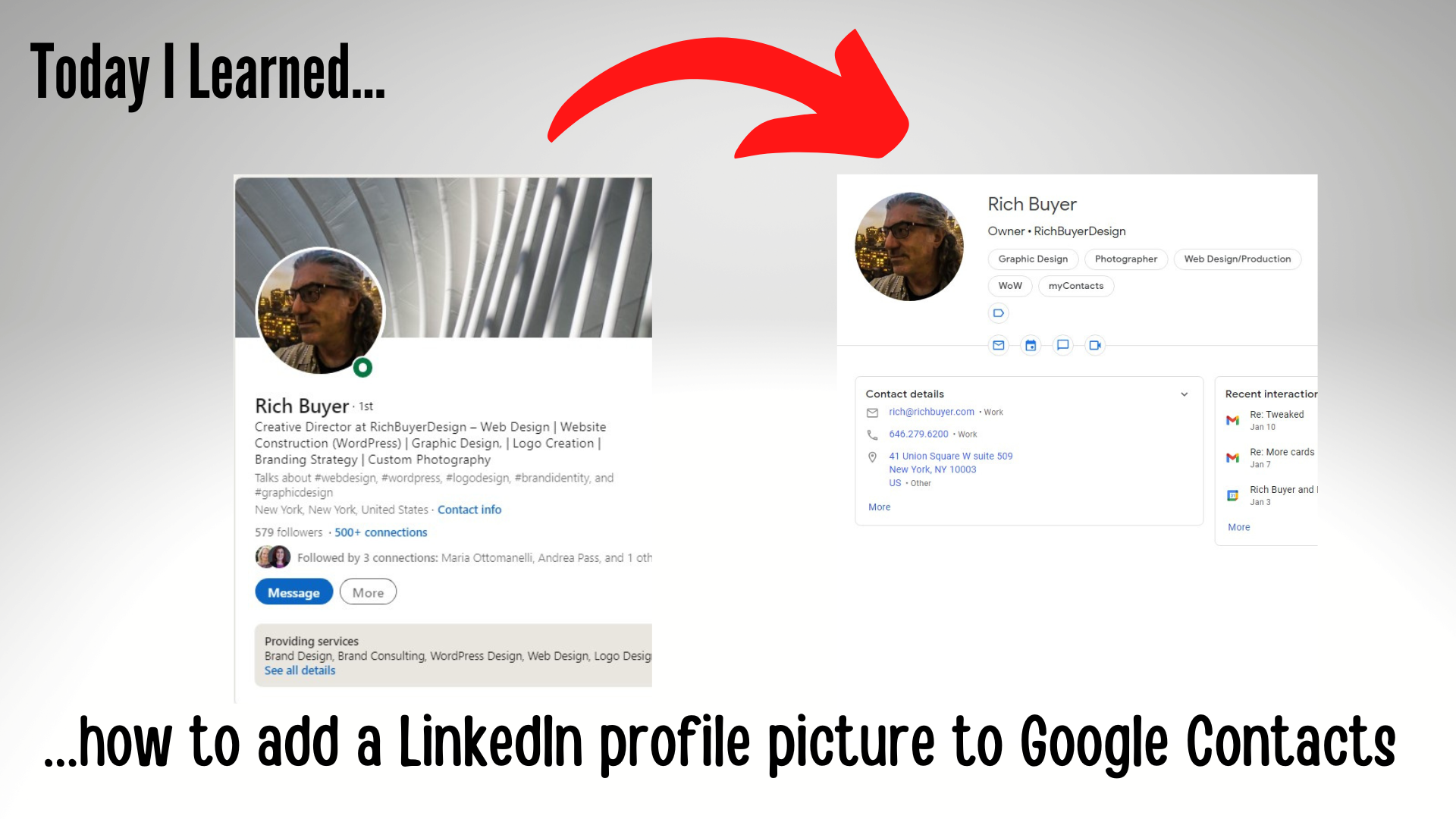Another short LinkedIn video hack. If you’re tired of sending someone multiple short messages in LinkedIn Messenger (via computer) and would rather be able to write out more than one paragraph at a time, you can quickly change your default settings.
Category: Branding Thoughts
How to Add a LinkedIn Profile Picture to Google Contacts
If you use Google Contacts on a regular basis, you probably knew you could upload a photo to the contact. You may have even known you could upload from an image address. But if you tried doing this with a LinkedIn profile image, you were told “Can’t Upload Photo”.
This is a lie.
So I made a short video to show how to make it work.
And thanks to Rich Buyer for letting me use his profile as an example. He’s a fantastic graphic designer and a joy to work with. After mistakenly spending six weeks trying to design a new business card by myself, I gave up and asked Rich for help. I had a glorious new card in under an hour. Yet another important lesson learned.
What is Your Significant Object?

“Narrative transforms insignificant objects into significant ones.”
The Significant Objects Hypothesis
In 2009, Joshua Glenn and Rob Walker tried an interesting quasi-anthropological experiment.
They went to garage sales and thrift stores and bought 100 items, all averaging $1.00. Old plates, ceramic figurines, #1 Dad mugs, all the various tchotchkes you regularly find gathering dust in your house.
They then brought on 100 authors to write up a short story about the items.
Finally, they posted both the items and their accompanying stories to e-Bay.
The result? Total cost spent on objects – $128.74. Total revenue generated from their sales? $3,612.51.
The pink horse in the photo? Bought for a dollar – sold for $104.50.
“Stories are such a powerful driver of emotional value that their effect on any given object’s subjective value can actually be measured objectively.” — Joshua Glenn and Rob Walker
What stories are you telling about yourself? About your business? About your products/services?
What emotional value are you adding?
For more information about the Significant Objects Project, click here – https://lnkd.in/gQedxpM
Right on Target
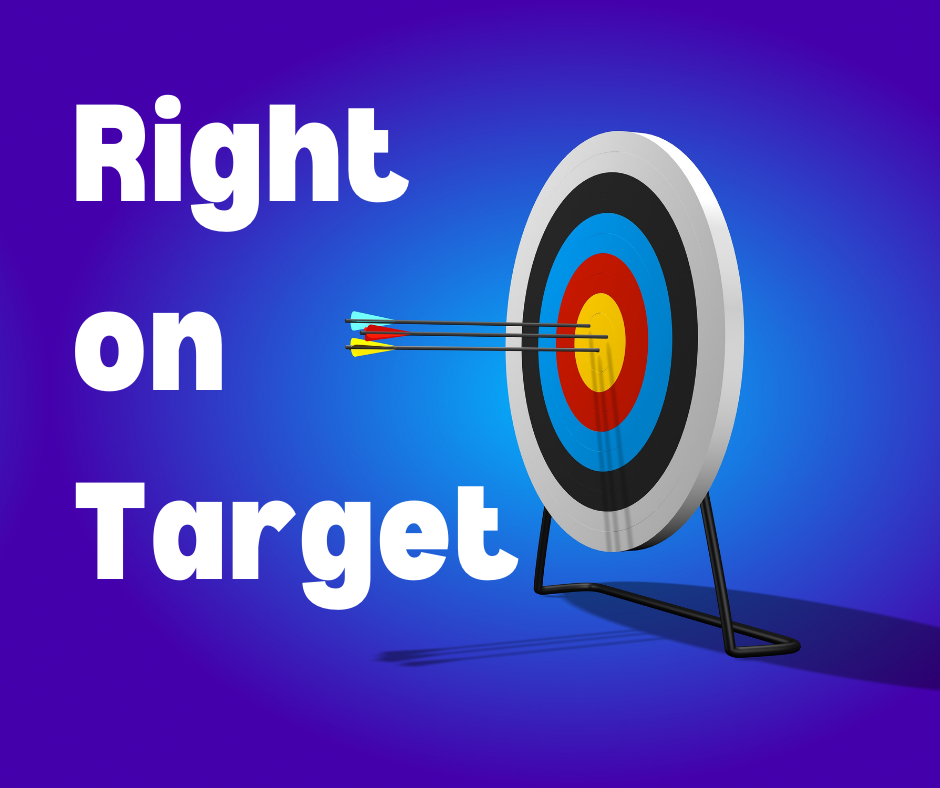
In my penultimate post on podcast narrative structures, let’s talk about Right on Target.
Is there a subsection of an industry that has a problem that you are particularly suited to solve?
Instead of talking about your business in general, talk about how you can fix this one specific thing.
This is a great narrative for any organization that can focus on a niche problem.
Example – Tom is a cybersecurity expert that wanted to specifically reach senior partners in large law firms. In his podcast episode, he spoke about a little-understood NY state law that could have catastrophic consequences for firms that ignored it. Within 24 hours of the episode launch, he got a panicked call from a large law firm in NYC. Days after they met, he ended up with a six-figure contract.
Just the FAQs

Do you feel like you keep telling every new client the same thing over and over again? All the same questions with all the same answers? Don’t you wish that for once, you could get a call from someone who knows all the basics of what you do so you can get to the heart of what they need?
Collect all those questions and answer them in your podcast.
This is a great format for those businesses who offer a basic product or service that can be customized and upsold.
Example – Leo sells insurance. He’s putting together a series of podcasts on “Everything You Need to Know About…” He covered auto insurance in one episode, homeowner’s insurance in another, and flood insurance in a third. Potential customers now know all the basics and Leo can spend more time customizing his policies for them.
The Origin Story
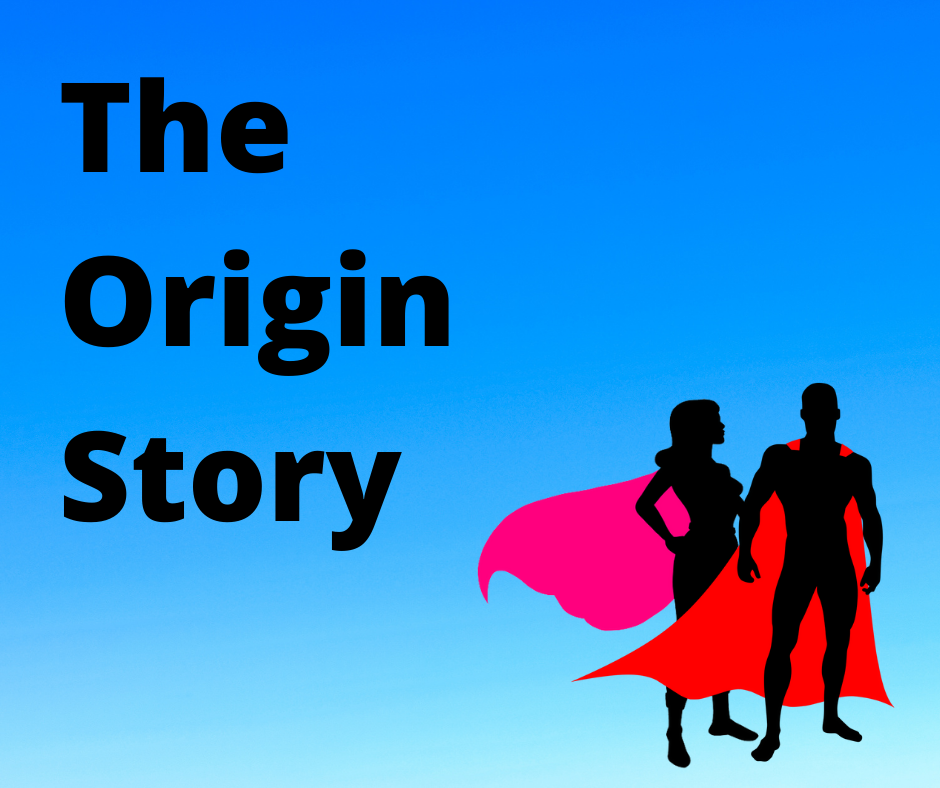
Next in my series of podcast narrative structures is The Origin Story.
Do you have a dramatic reason why you are in the business you’re in? Is there a startling fact about you or your business that is unique in your industry?
This is a great type of podcast to use as a differentiator in your field, especially if the field you’re in is a common one (real estate agent, lawyer, accountant).
Example –
Theresa is a personal injury attorney. When she was in her early 20s, she was badly hurt in a hit and run. She had such a horrible experience with her own lawyer that she swore when she got out of the wheelchair, she was going to law school. Fifteen years later, she is now a well-respected personal injury attorney with a reputation for fighting unrelentingly for her clients.
The Hero’s Journey
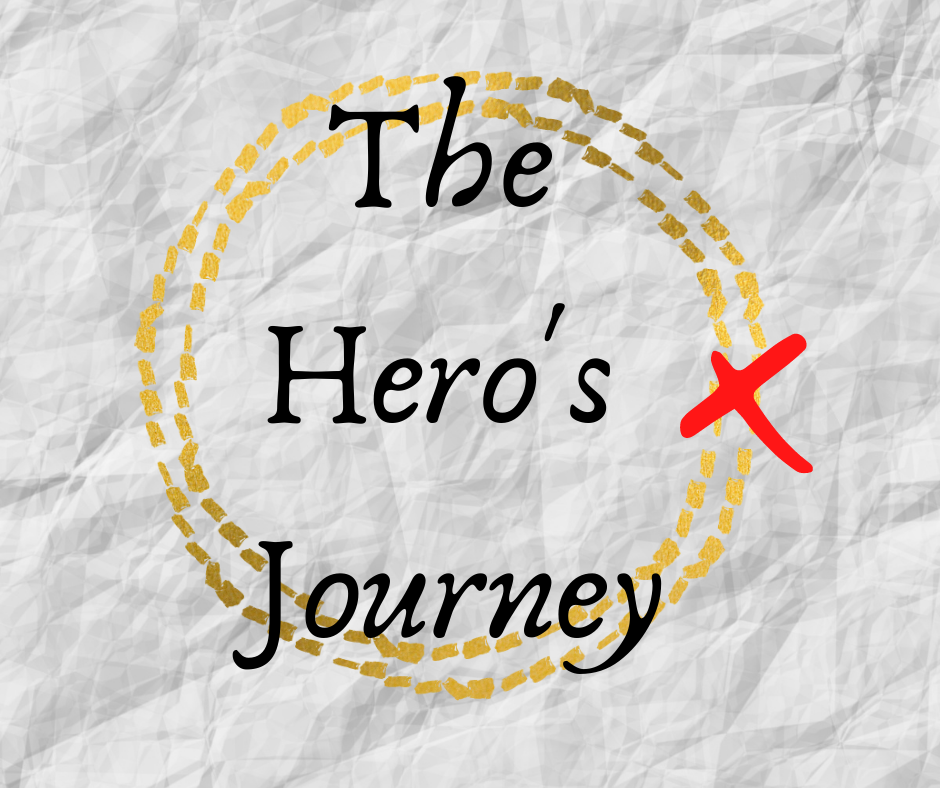
When sitting down with new podcast clients, I ask them what kind of story they want to tell, and why?
I do my best to help them find the right type of narrative for the results they are looking for. Over the next few days, I’ll be sharing a few of the archetypes that have worked for some of my previous clients.
First up is The Hero’s Journey.
Have you been doing what you’re doing for a long time? In your early years, did you make mistakes and learn from them? Are you now considered a mentor and expert in your field? In your podcast, you tell the story of the challenges of getting to where you are and how you can share your expertise with others.
This is a great narrative structure for experienced consultants and coaches.
Example –
Hal took over the family business from his father. He quickly realized that he wanted something else from his life and decided to sell the company. In his ignorance, he made every mistake it was possible to make, and ended up shutting down the business and walking away. He was so traumatized by this he began learning everything there was to know about the successful buying and selling of businesses. He is now a high-end business broker who guides his clients successfully through the same minefields that tripped him up years ago.
Non-Traditional Marketing
Check out this Forbes article on 15 non-traditional ways to market your business… I really like number 3:
“Podcasting is a powerful medium that continues to grow. Podcasts are becoming increasingly influential to consumers and are an effective way to showcase your organization as a subject-matter expert—a thought leader—in your industry as well as promote who you are, what you do and how you do it. Society likes things to be easy and convenient. For many, listening to a podcast is a great way to consume content.”
How Many Talented People Are You Repelling from Your Company?
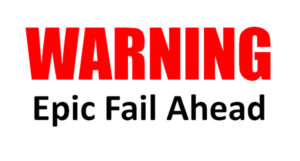
One of my personal branding clients is looking for a new position as a mid-level manager in a corporate environment. We redid her resume and LinkedIn profile, and I’ve been coaching her on how to reach the right hiring managers. She’s still a bit old school and prefers to use corporations’ ATS (applicant tracking system) programs to upload her resume for job listings. She now understands why I (and many other job coaches) advise people to avoid those systems at all costs.
This morning she called me, baffled and annoyed. She’d been trying to apply for a job on a company’s site and the ATS setup was confusing her. I set up a video share and took a look.
The first page had the standard “Please enter your contact information” fields, including one for whether or not you were a current employee. If yes, please enter your employee number. She entered her contact info and clicked “no”—she wasn’t a current employee. Then she clicked “Save and continue.”
ERROR! YOU MUST ENTER YOUR EMPLOYEE NUMBER!
There was no way past that first page without an employee number. We finally added a few zeros to the field and it sent us to the next page.
Now came the section where you upload your resume and it fills in the various job fields. As usual, this did not go smoothly (missing some employers, dates mislabeled, etc.), and my client had to manually correct most of the fields. Then she clicked “Save and continue.”
ERROR! THE VALUE YOU HAVE ENTERED IN THE FIELD “EMPLOYER” IS NOT VALID. PLEASE CLICK “SELECT” AND SPECIFY THE APPROPRIATE VALUE.
It took a bit of digging, but it turns out that she had to choose from a list of existing companies rather than accepting the automatic information from her resume. However, her current employer wasn’t on the list (of 20,000 worldwide organizations). She couldn’t move forward.
I told her she could mail her resume and cover letter directly to the organization. But, I cautioned, did she really want to? Did she really want to be part of a company that presented itself so badly? And worst of all, the company was a multi-national corporation marketing itself as having the world’s best digital technology consultants!
She’s thinking about it. She’d be a perfect fit to the job description and, knowing her drive and abilities, would be a real asset to the company. But there is a very good chance that just she’ll walk away.
So it’s worth considering: How well—or badly—is your ATS designed? Are your questions necessary or intrusive? Is your ATS actually repelling candidates instead of making the application process more efficient? Finally, ask yourself this: Would you ever, in a million years, ask potential customers to jump through the same hoops you expect potential employees to?
A system overhaul is never easy, but it’s something to think about the next time you hear someone in your organization bemoaning the lack of acceptable job candidates.
They are out there. You just may have pushed them away.
What is Your Origin Story?
There is a reason why most superhero movies start with an origin story.
They tell the story of why.
What is your origin story?
Why are you doing what you do?
Where did you come from? What drove you to choose the career that you did? Why did you decide to start your own company? What problem are you trying to solve? What questions are you trying to answer? Who are you trying to help?
Check out this article on why your company’s origin story matters
– The most compelling story you can tell
If you know where your journey began you also know why you’re getting up every morning. When the going gets tough (as it always does) your “why” is one of the things you can lean on to motivate and energize yourself. There is a common thread and cause behind what you’re doing.
But the “why” is just as important for the people around you. Your family, friends and employees are on this journey with you, and they need to understand the “why” just as much as you do. They are supporting you, following you and helping you — and they need to know why.

